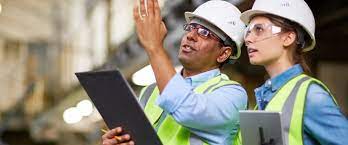Building a Sustainable Construction Business isn’t just a professional endeavor—it’s a personal philosophy brought to life in brick, bamboo, and biophilic design. You’re not only putting up walls; you’re taking a stand for how future generations will live, breathe, and build. But passion alone isn’t enough—it takes planning, patience, and a willingness to walk the talk when it comes to the climate conversation.
Start With the Soul of Your Mission
Before you file a single document or pitch a single client, you’ve got to figure out what your company actually stands for. Not just the aesthetic of sustainability, but the philosophy behind it—your materials, your methods, your message. Will you specialize in retrofitting old buildings to meet net-zero standards, or are you starting from scratch with new construction that respects native ecosystems? Defining your scope now will help you build trust and clarity later when clients are deciding whether your ethos matches theirs.
Know the Code—Local, Federal, and Future
Regulations in sustainable building aren’t a red tape nuisance—they’re your blueprint. Every city, county, and state has its own building codes, energy requirements, and zoning laws that are evolving almost as fast as the climate crisis itself. You’ll need to stay plugged in to groups like the U.S. Green Building Council, as well as city planning departments and environmental agencies. Get to know not just what’s required today, but what’s coming tomorrow, because the best green businesses don’t just follow—they anticipate.
Gain Business Skills with Online Degree
You don’t need to have an MBA to build a sustainable construction business, but going back to school can give you the edge you didn’t know you were missing. Whether it’s a short course or a full business degree, gaining foundational skills in accounting, communications, or management can help you avoid costly mistakes later on. And with the rise of flexible online degree programs, it’s easier than ever to work full-time while staying on top of your coursework. If you’re ready to expand your toolkit and lead your company with more confidence,you may like this.
Build a Network Rooted in Values
Your vendors, subcontractors, and consultants shouldn’t just be talented—they should share your values. In this industry, who you work with speaks volumes about who you are. You’re going to need suppliers that can source reclaimed wood,low-VOC paints, and renewable insulation without cutting ethical corners. Finding the right people takes time, but if you can build a coalition of like-minded professionals, you’ll be able to promise quality and conscience in every part of your build.
Don’t Just Market—Educate
A big part of your early hustle will be explaining why your business matters, not just what it does. Most people still think “green building” just means solar panels and higher costs, so your job is to shift that mindset. You’ve got to show how energy efficiency pays off, how sustainable construction design enhances mental health, how your methods support local economies. Position yourself as a resource—not just a contractor—and people will come to you because you’re helping them solve a problem they didn’t even realize they had.
Find Investors Who See the Long View
The startup capital needed for sustainable construction can be daunting, but not if you pitch to people who get it. Venture capital firms that specialize in climate tech, impact funds, and even green banks are increasingly open to backing projects that marry profitability with planet-first practices. You’ll have to prove you can scale without selling out, and that your cost models make sense in a real-world economy. But if you can paint a clear picture of your margins, mission, and milestones, someone out there will want in on your story.
Design Like a Listener
Good green buildings don’t just stand—they breathe. The most successful sustainable construction builders pay attention to how light moves through a home, how sound bounces off a wall, how temperature shifts with the seasons. It’s not about forcing a trendy aesthetic onto every space, but about listening to what the land is saying and responding with care. That kind of attentiveness doesn’t just lead to beautiful buildings—it leads to ones people want to live in for decades.
Stay Adaptive, Not Just Compliant
Truly sustainable construction business models evolve, just like ecosystems. What works in one climate zone won’t fly in another; what’s cutting-edge today might be outdated next year. If you want to thrive in this space, you need to make peace with uncertainty and stay light on your feet. Keep testing new materials, revisiting past projects, and learning from your mistakes. The goal isn’t perfection—it’s progress, and that only happens when you make adaptability part of your core culture.
At the end of the day, starting a sustainable construction business in the green building space isn’t just about revenue or recognition—it’s about responsibility. You’re stepping into a role that’s as much about stewardship as it is about entrepreneurship. If you do it right, your legacy won’t just be measured in square footage or client lists, but in cleaner air, healthier communities, and buildings that tell a different story about what success looks like. So get your hands dirty, make bold decisions, and don’t be afraid to break a little ground—literally and figuratively. The planet’s waiting on you.
Unlock your business’s potential with Magnetic Digital Marketing Services and transform your online presence into a lead-generating powerhouse today!
Written By: Ronald Hadley ronald.hadley@biztipstoday.com

